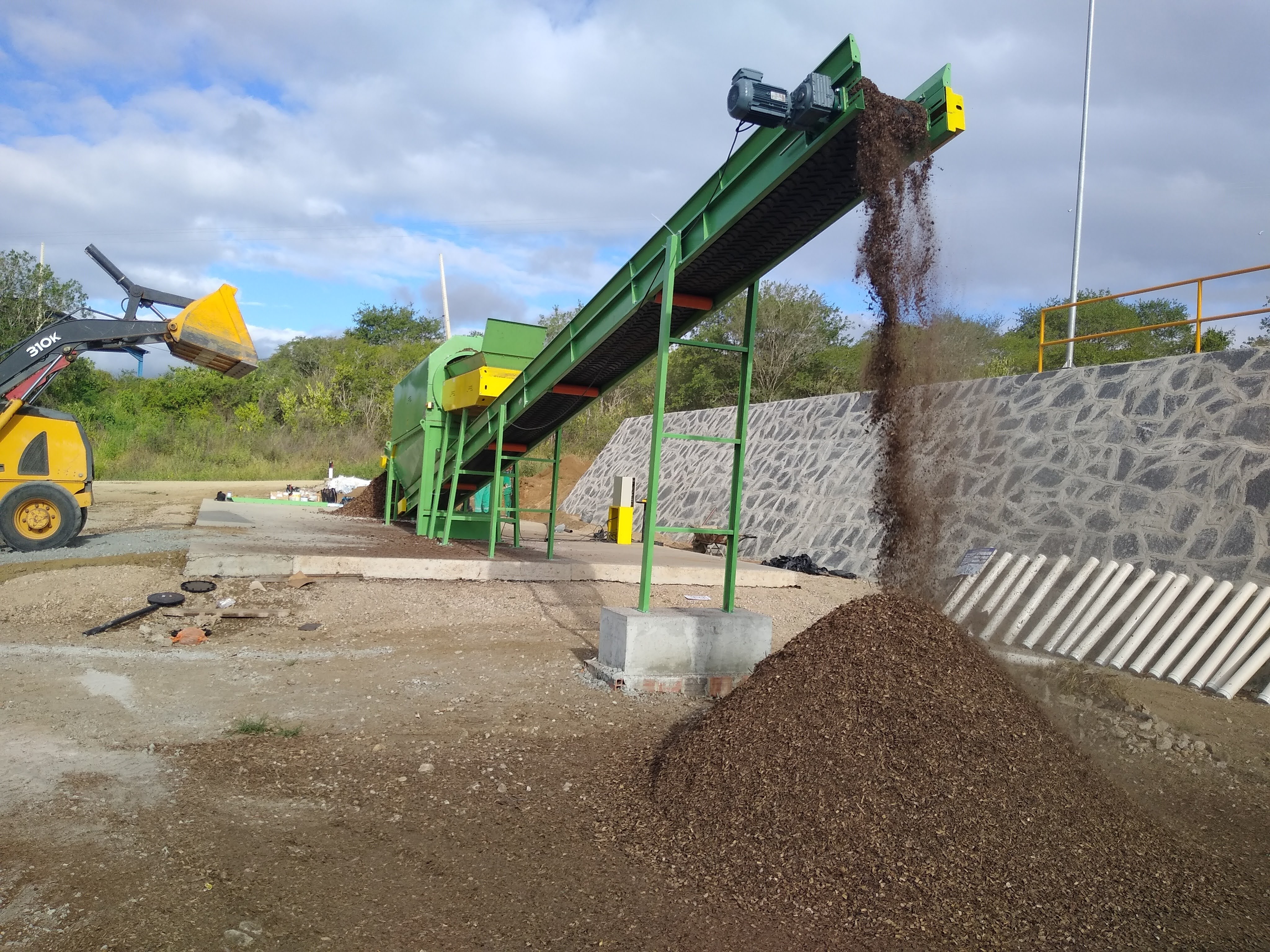Mechanical treatment for organic compost production

News25 de May de 2025
Due to the increasing concern about environmental pollution, associated with the scarcity of natural resources, the ideal for the organic fraction of solid waste would be the stabilization of these, through controlled biological processes, thus allowing the recycling of nutrients and the use of organic matter.
Public solid waste, resulting from pruning, generates a considerable volume of plant material that can be used for composting and can contribute significantly to reducing the damage caused by the disorderly disposal of these urban waste. This procedure allows the production of compost for use in agricultural areas and for seedlings and landscaping, as it recycles the nutrients present in these materials.
Given the lack of new areas for waste disposal and the need to prolong its useful life, a factor that is also a strong argument for the implementation of composting and recycling systems today is the minimization of the amount of solid waste that is disposed of in these landfills.
Another environmental factor concerns the production of seedlings, planting trees in urban areas, and the construction or renovation of flower beds for gardening in public areas.
The soil for such purposes is largely imported from wild and rural areas in the metropolitan area, and marketed under the name "fertilized soil", that is, a mixture of this mineral soil with organic fertilizer is made.
The use of this waste can serve as a basis for simultaneously giving a use destination to a material that, from an environmental point of view, is sustainable and is currently dumped in landfills and dumps contributing to environmental problems, while simultaneously achieving a good saving for the public scenario.
Composting
Traditionally, agricultural origin materials are composted. This type of material is generally free of contaminants and, when composted correctly, produces good quality organic fertilizer suitable for use in crops. However, currently, compost can be produced from other organic sources such as:
- Residues from agricultural or food industries. The carbon/nitrogen ratio (C/N) can vary greatly. Legumes are rich sources of N and grasses of C. The mixture of these two types of material is almost always adequate.
- Residues from horticulture, arboriculture, landscaping companies, urban pruning, and gardening are organic raw materials.
Humus can increase your fertility and productivity in agriculture, gardening, and landscaping.
PTL series with traction roller
OUR MACHINES HAVE SIZE AND CAPACITY THAT EXACTLY MEET YOUR REQUIREMENTS IN THE COMPOSTING PROCESS
The PTL series of chippers was specially developed for the production of microchips. These, small and homogeneous, are raw material for composting.
Traction roller: it is designed to process large volume materials, such as bark, sheets, and branches, where pre-compaction is required in the feed. This system increases the efficiency of biomass capture resulting in better production, efficiency, and savings.
MULTI-BLADE ROTOR: The chipper is equipped with a new drum-type multi-blade cutting system. Its cutting angle allows for quick and efficient chipping work. The set of 08 blades is mounted alternately facilitating cutting and reducing the motor torque required.